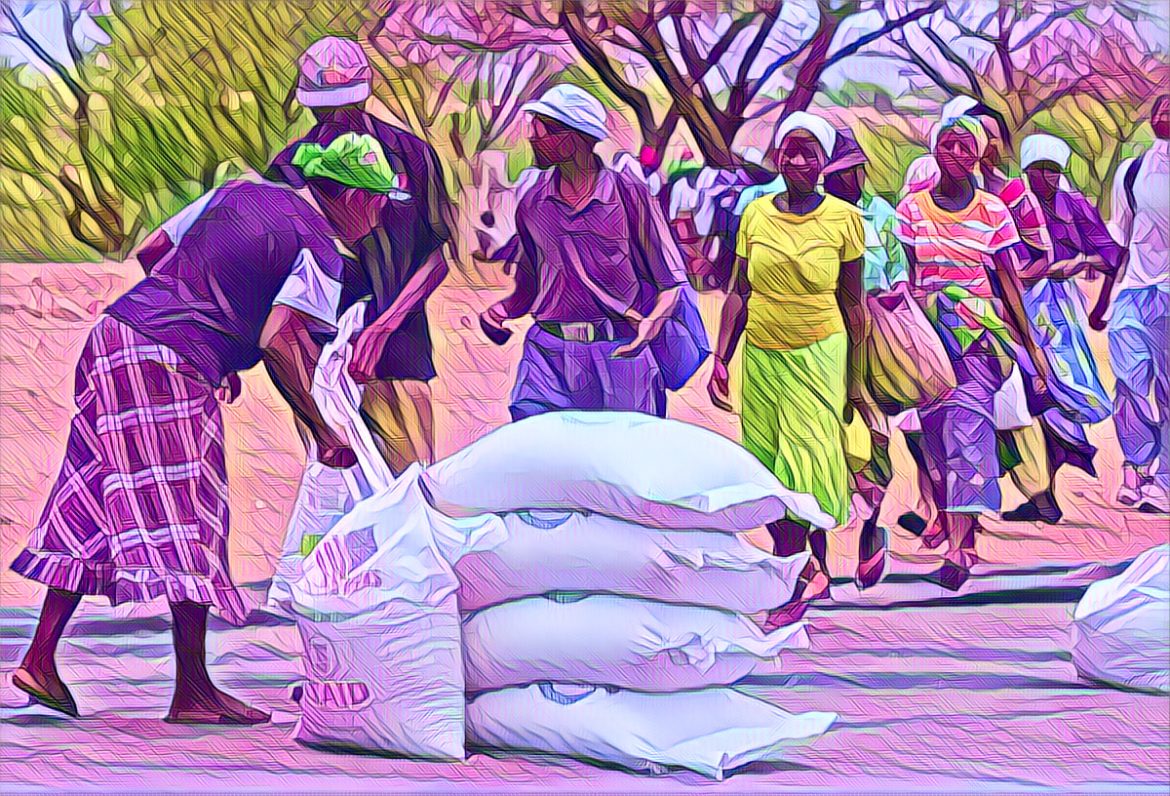Zimbabwe is facing a severe food crisis, as only 6 percent of households in the country received free grain from the government in 2023, according to a new survey. The Poverty, Income, Consumption, and Expenditure Survey (PICES) also found that the government’s safety nets were inadequate and did not reach most of the needy people.
The survey, which monitors households’ welfare situation in the country, was conducted by the Zimbabwe National Statistics Agency (ZIMSTAT) with support from the World Bank and UNICEF. It covered the period from June 2017 to May 2019 and included a rapid assessment of the impact of the economic difficulties and drought on the living conditions of urban and rural Zimbabweans.
The survey showed that extreme poverty rose substantially between 2017 and April-May 2019, with urban areas affected most in relative terms. The proportion of households living below the food poverty line increased from 28.4 percent in 2017 to 38.3 percent in 2019, while the proportion living below the total consumption poverty line increased from 38.0 percent in 2017 to 50.4 percent in 2019.
The survey also revealed that half of all extremely poor people were covered by at least one social assistance program, but the coverage and adequacy of these programs were low. Only 6 percent of households received free grain, while 1 percent received cash transfers other than Covid-19 relief. The majority of households relied on their coping strategies, such as reducing food consumption, selling assets, or borrowing money.
The availability and affordability of basic commodities also declined significantly, especially in rural areas. The survey found that the ability to buy maize meal, cooking oil, and chicken decreased for most households, while the use of US dollars for key food purchases increased. The survey also collected data on health, education, employment, and access to services, which showed a deterioration in the quality of life of Zimbabweans.
The PICES survey is the main source of data for measuring poverty and inequality in Zimbabwe and provides evidence for policymaking and planning. The survey was first conducted in 1995 and has been repeated every five years since then. The latest survey was delayed due to the Covid-19 pandemic, which also affected the data collection and analysis.
The survey results come at a time when Zimbabwe is facing multiple challenges, including a prolonged economic crisis, a devastating drought, and the Covid-19 pandemic. According to the World Food Programme, more than 8 million people in Zimbabwe are food insecure and need urgent humanitarian assistance. The UN agency has appealed for $250 million to provide food aid to the most vulnerable people until April 2024.
The Zimbabwean government has also acknowledged the food crisis and has pledged to import more grain from neighboring countries. However, the government has also faced criticism for its handling of the situation, and for failing to address the root causes of poverty and hunger, such as corruption, mismanagement, and human rights violations.
The PICES survey is a stark reminder of the plight of millions of Zimbabweans, who are struggling to survive and feed their families. It also calls for more action and accountability from the government and its partners, to ensure that no one is left behind.
Source: MSN


